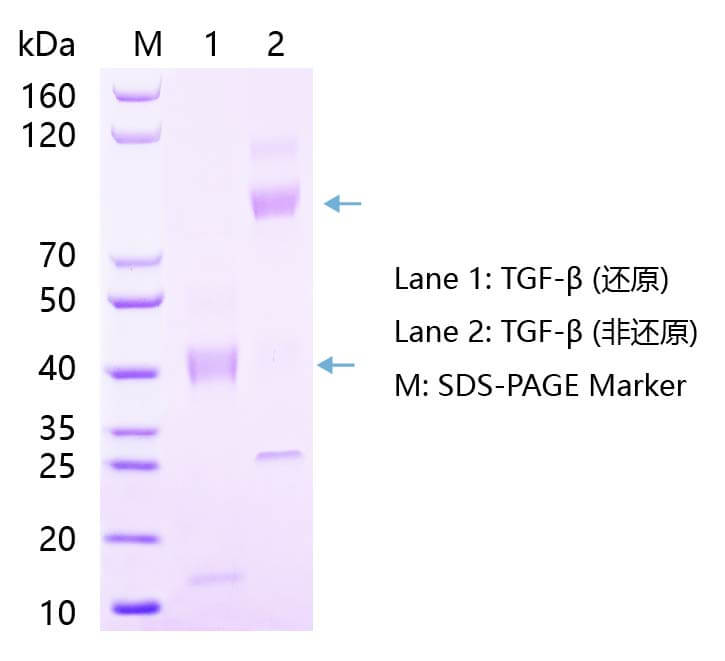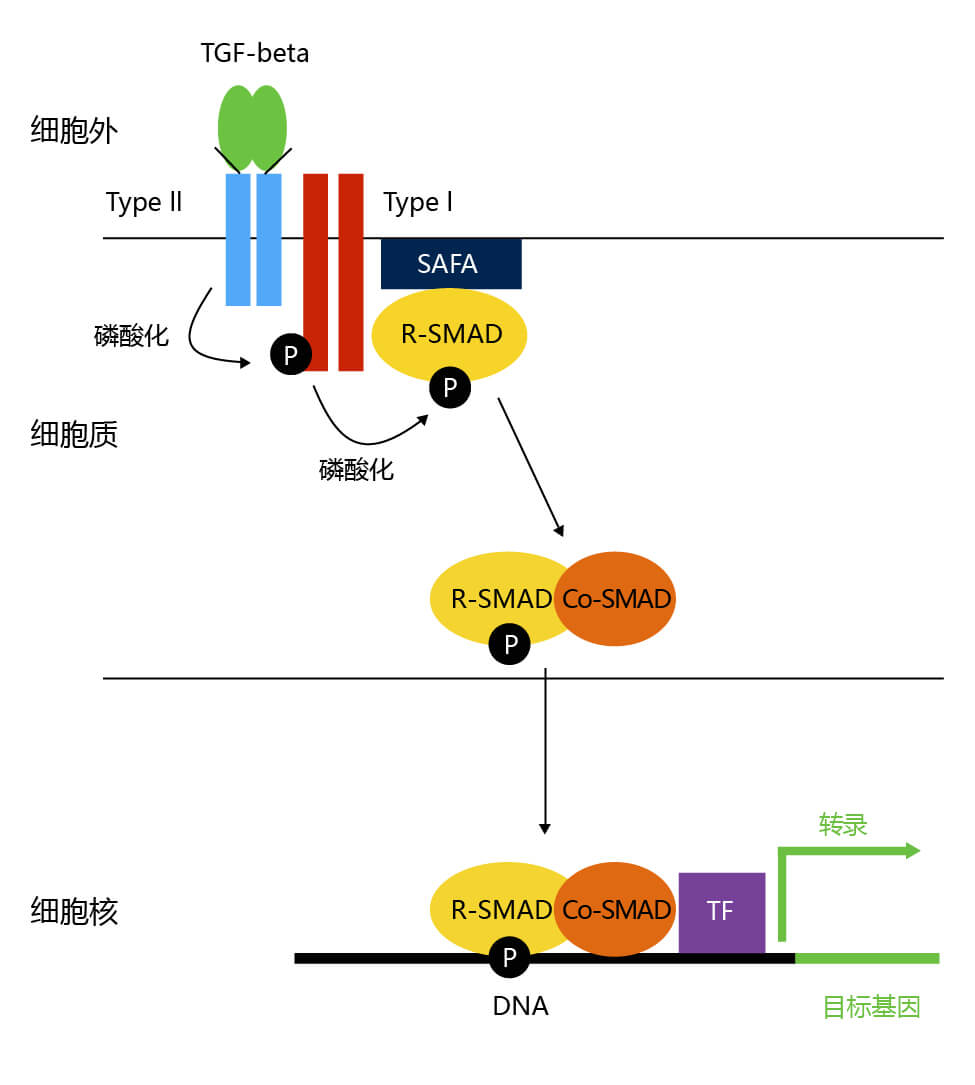Transforming Growth Factor Beta 1 (TGF-β1)
Human Recombinant TGF-β1 Protein
| Name |
Transforming growth factor beta 1 (TGF-β1) |
| Alternative Names |
CED protein, DPD1 protein, LAP protein, TGF-β1 protein, TGFB1 protein |
| Catalog # |
P1230 |
| Uniprot ID |
P01137.2 |
| Description |
N-terminal His-tagged TGF-β1 fusion protein, derived from mammalian expression system, expressed by transfected HEK293 cells |
| Purity |
> 90%, analyzed by SDS-PAGE |
| Species |
Human |
| MW |
Around 42.3 kDa |
| Endotoxin Level |
< 1EU/μg, analyzed by LAL assay<1EU/μg |
| Bioactivity |
By measuring the inhibitory ability of TGF-31 on mouse L-4-dependent proliferated HT-2 cells, EC50≤0.05ng/mL, corresponding to specific activity of 7×106 IU/mg. |
| Storage |
Lyophilized powder 4°C valid for 3 years, -20°C after rehydration valid for 1 year. Avoid freeze / thaw cycles. |
| Transportation |
Ordinarily lyophilized powder, transported at low temperature |
| SDS-PAGE |
 |
Introduction of Transforming growth factor beta 1 (TGF-β1)

Transforming growth factor beta 1 (TGF-β1) is a pleiotropic cytokine, which regulates cell proliferation, differentiation and apoptosis through the cell surface receptor signaling pathway in the form of autocrine or paracrine. It also has important regulatory effects on the synthesis of extracellular matrix, wound repair, immune function, etc.
There are three isomers of TGF-β: TGF-β1 TGF-β2, and TGF-β3
- TGF-β1: Most expressed in kidney, distributed in glomeruli and renal tubules, and has the strongest activity.
- TGF-β2: Only expressed in the juxtaglomerular apparatus.
- TGF-β3: Similar to the distribution of TGF-β1, but lower in content.
The newly synthesized TGF-β forms inactive dormant complexes with potentially active proteins via non-covalent bonds and stores them in the α-granules of platelets. Under strong acid, strong base, high temperature, plasmin and cathepsin conditions, TGF-β activates by removing potentially active proteins and binding to receptors form the membrane of target cells, thereby exerting biological effects. Almost all tissue cells have TGF- β receptors. Currently known receptors include TβR-I type, TβR-II type and TβR-III type, among which, type I and type II receptors are involved in signal transduction, while type III receptors are not involved in signal transduction directly .
References
[1] Letterio J. et al. Regulation of immune responses by TGF-beta. Annual Review of Immunology, 1998,16:137-161.
[2] Mark de Caestecker. et al. The transforming growth factor-ß superfamily of receptors. Science Direct, 2004, 15(1):1-11.
[3] Nicole Dünker. et al. Targeted mutations of transforming growth factor-ß genes reveal important roles in mouse development and adult homeostasis. FEBS Jourmal, 2003, 267(24):6982-6988.

Related Products


